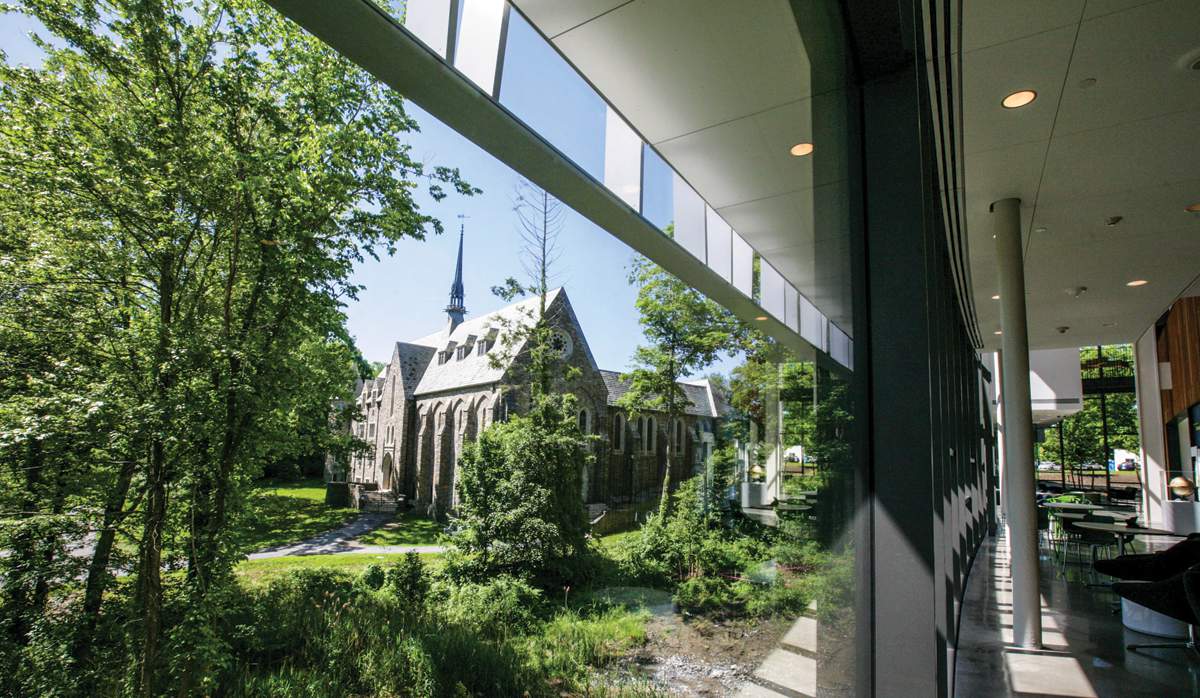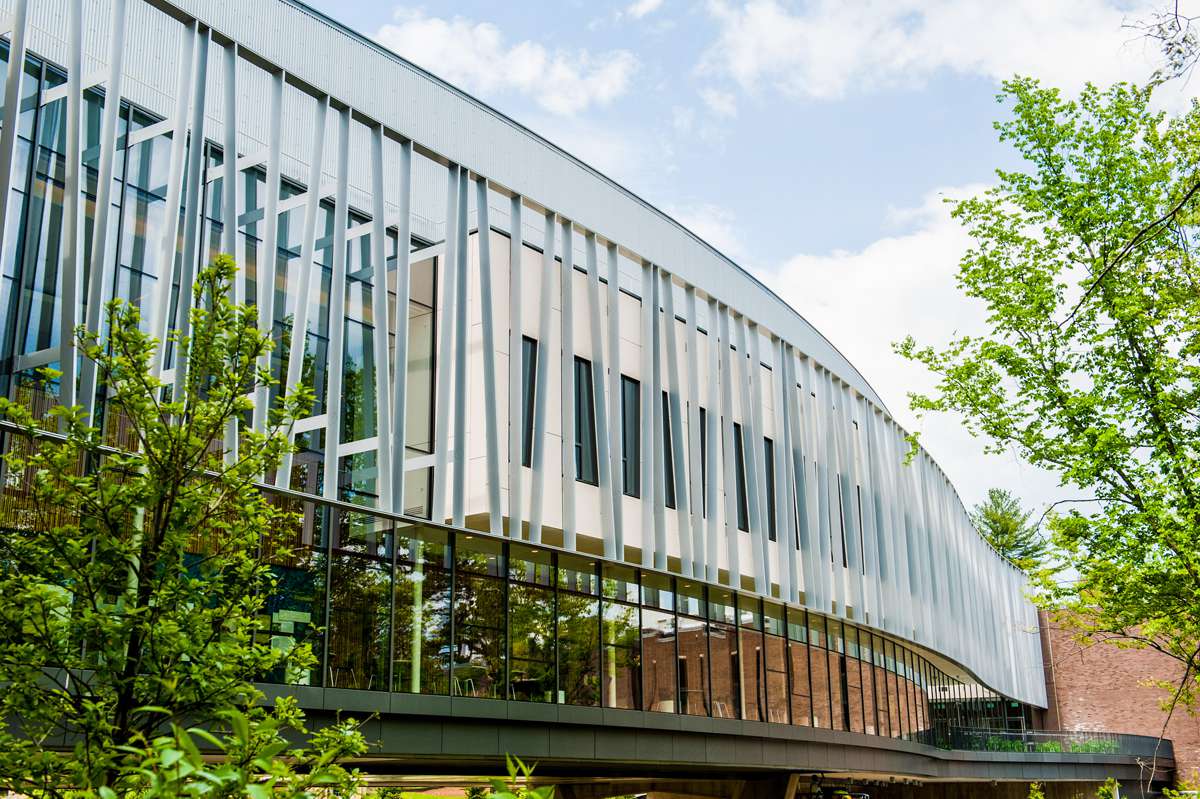As I toured the Bridge for Laboratory Sciences in early May, I was struck by the literal and figurative representations embodied in Vassar’s newest building. Built in an area of campus that was not only underused but also previously deemed unusable, the 82,000-square-foot masterpiece that anchors the school’s new Integrated Science Commons (ISC) is a true bridge of a building.
It literally bridges the Fonteyn Kill and the soon-to-be resurrected Edith Roberts Ecological Lab (populated in the 1920s with native plants). Its main corridor connects the central campus to the south end of the campus near Skinner Hall, providing a southern entrance to campus from Raymond Avenue. The glass-enclosed, public-facing labs, adjacent to inviting social and study spaces, makes it a bridge that figuratively connects all students and faculty to the science studied there. And the collaborations that have been facilitated by the building span disciplines.
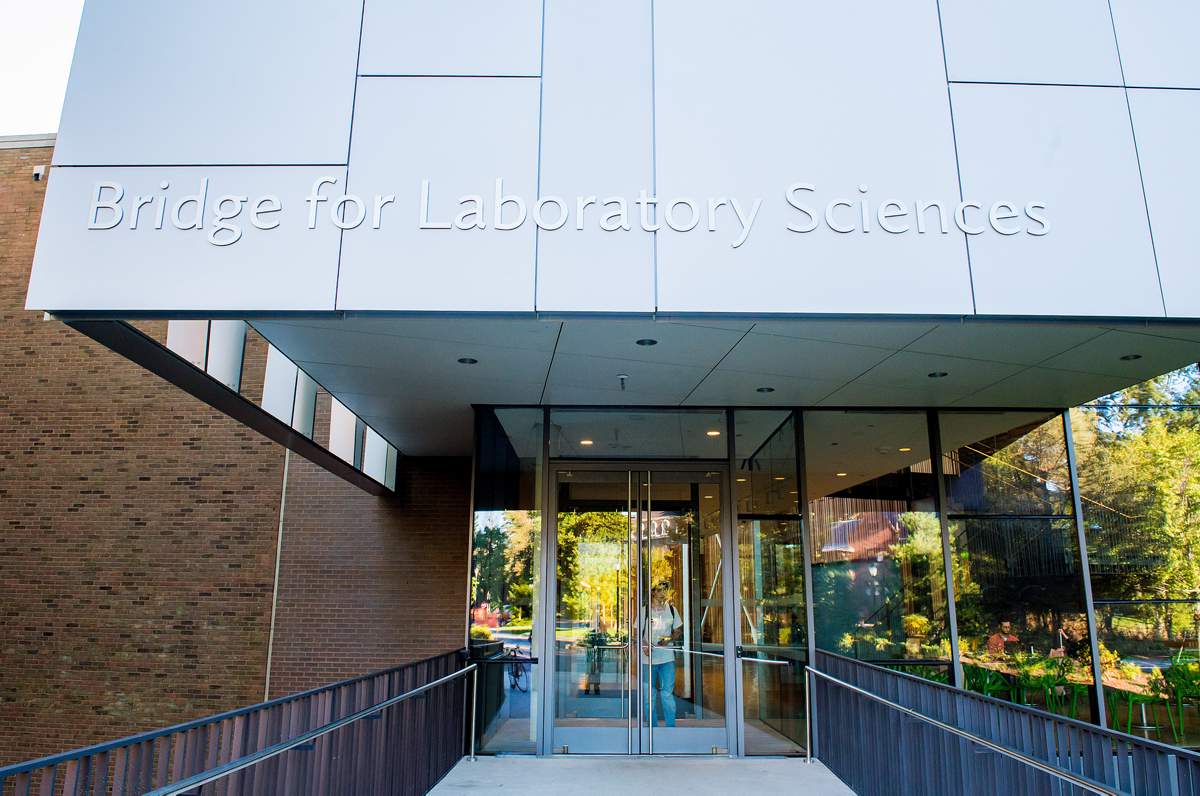
The scale of the building was deceptive upon first approach. It didn’t seem much larger than the historic buildings that surround it. The building’s 400-foot- long façade is designed to blend into the surrounding landscape, mimicking the nearby birch trees, and its scale is partially diminished by an arboretum where some of the school’s oldest trees have grown since before Vassar was built. Hung from steel pipes (that is, built from the top down, rather than the bottom up), this “green building” not only looks light and airy, but it places a minimal footprint over a landscape in the midst of restoration—a landscape that is offering a new platform for environmental research.
Set inside an atrium of glass that brings the outside in, the cafe with its ample, open seating entices science and non-science types alike. With my coffee in hand, I wound through the curved expanse of the long hallway, whose end I could not see. Flanked by colorful chairs and tables, the pathway is designed to encourage those on their journey through the looking-glass-of-a-building to stay for awhile and enjoy a view of the Fonteyn Kill, with its landscape reflective of the seasons, and discover what goes on around the bend in the classrooms and labs.
As I sauntered through ghost corridors (back passageways through which chemicals and equipment are shuttled), across internal bridges, and into the “tree house” portion of the building—a section suspended within the trees over the ravine and stream below—I couldn’t help but wonder how the course of my own life would have been altered had this multidisciplinary science building been on the campus 30 years ago. And most importantly, I thought about how the Bridge building and the accompanying updates to Olmsted, Sanders, and New England will change the course of so many Vassar lives today and into the future.
The $125-million project, which took more than a decade of planning and three years of construction, has created a vibrant science hub that brings the college’s facilities into the 21st century, aligning the buildings with what the school has always had: a vigorous science curriculum that fosters a relationship among all of the sciences. But until now, the departments of biology, chemistry, cognitive science, computer science, earth sciences, physics and astronomy, psychology, as well as biochemistry and the neuroscience of behavior programs had been scattered throughout the campus. The results are breathtaking—and breath-saving!
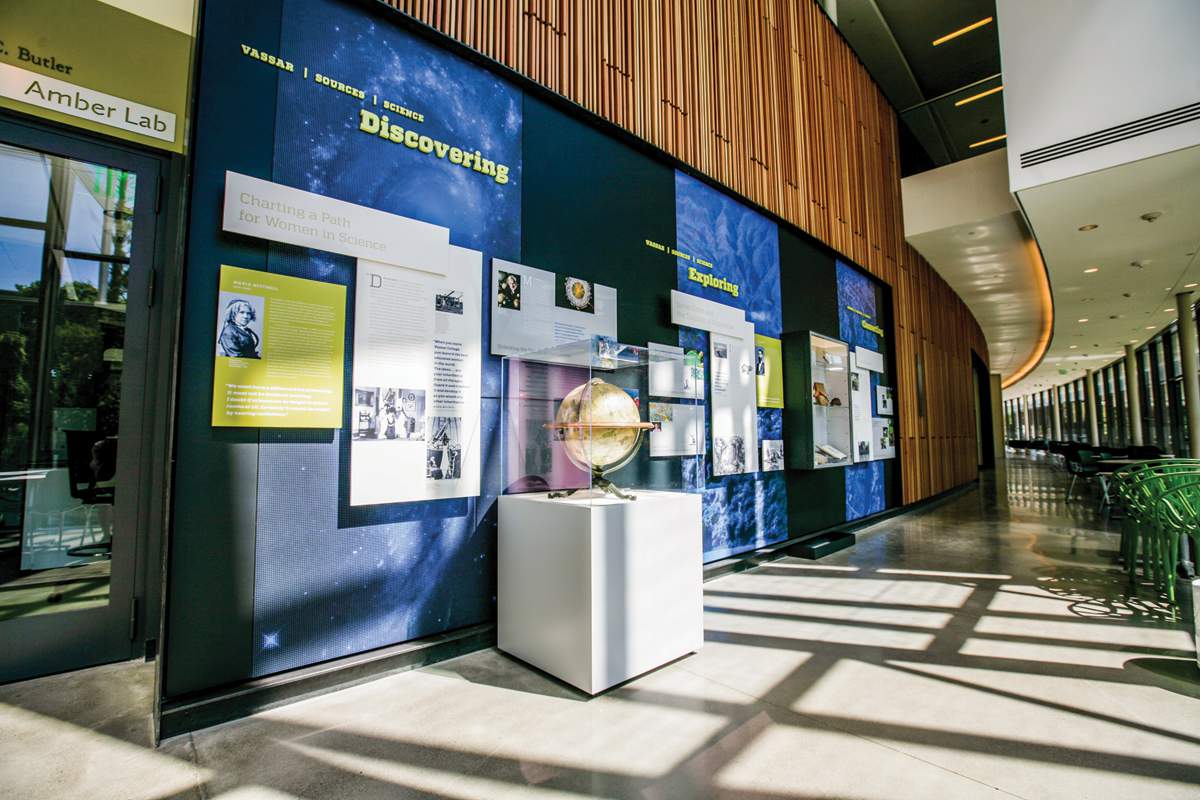
A stuffed cane toad brought back from South America in 1872 by James Orton, Professor of Natural History…an “astro globe” used as a teaching tool by Maria Mitchell, Professor of Astronomy…fossils collected by geology students on a field trip to South Dakota in 1896. These are just a few of the hundreds of artifacts now on display in Vassar’s Integrated Science Commons.
Designed by Poulin + Morris, the displays document the history of science education at Vassar and the scientific achievements of Vassar faculty and alumnae/i.
Read more about the Vassar College Artifacts Project (VCAP) in the Vassar Quarterly.
Photo: Tamar ThibodeauBetween 1983 and 1987, I quite literally ran around the campus to fulfill the multidisciplinary (aka independent) major that I had dubbed sociobiology—the study of human and animal behavior (the neuroscience of behavior major did not exist in the 1980s).
I felt the need to understand human and animal behavior from a context that included more than just one discipline.
Wanting to be Margaret Mead and Jane Goodall, I felt the need to understand human and animal behavior from a context that included more than just one discipline. I wanted to understand both nature (biology and cognitive science) and nurture (sociology, anthropology, and psychology). On a basic level, I believed that to grasp “why humans and animals did things” (as a 19-year-old, I thought I could figure this out), I needed more than just biology; I needed historical and social context and an understanding of thought and the processes of the mind.
This educational goal, along with my student lifestyle, had me covering all four corners of the 1,000-acre campus. I lived on the west side of campus in Joss (and, as a senior, in the TAs), swam daily up at Walker Field House, studied religiously in the stacks at the library, went to biology (and a few chemistry) classes in Olmsted and Mudd, then to psychology and cognitive science classes in Blodgett Hall on the north end of the Vassar globe. I took sociology and anthropology classes in buildings wherever the school placed them, including Rocky and Avery. While my major was highly organized and directed, I was all over the map.
The head of the Independent Program at the time was Bob Suter, now professor emeritus of biology. Bob liked my concept and agreed to be my advisor. Without giving myself too much intellectual credit, Bob’s endorsement may have also stemmed from the fact that my belief—that one discipline couldn’t provide all the answers—was similar to his own. Studying the biomechanics, behavioral ecology, and evolution of spiders, Bob’s research (which I proudly conducted with him over the course of two summers) included an interfacing of biology and physics. His research made him an early proponent of the merging of disciplines, long before the ISC was conceived.
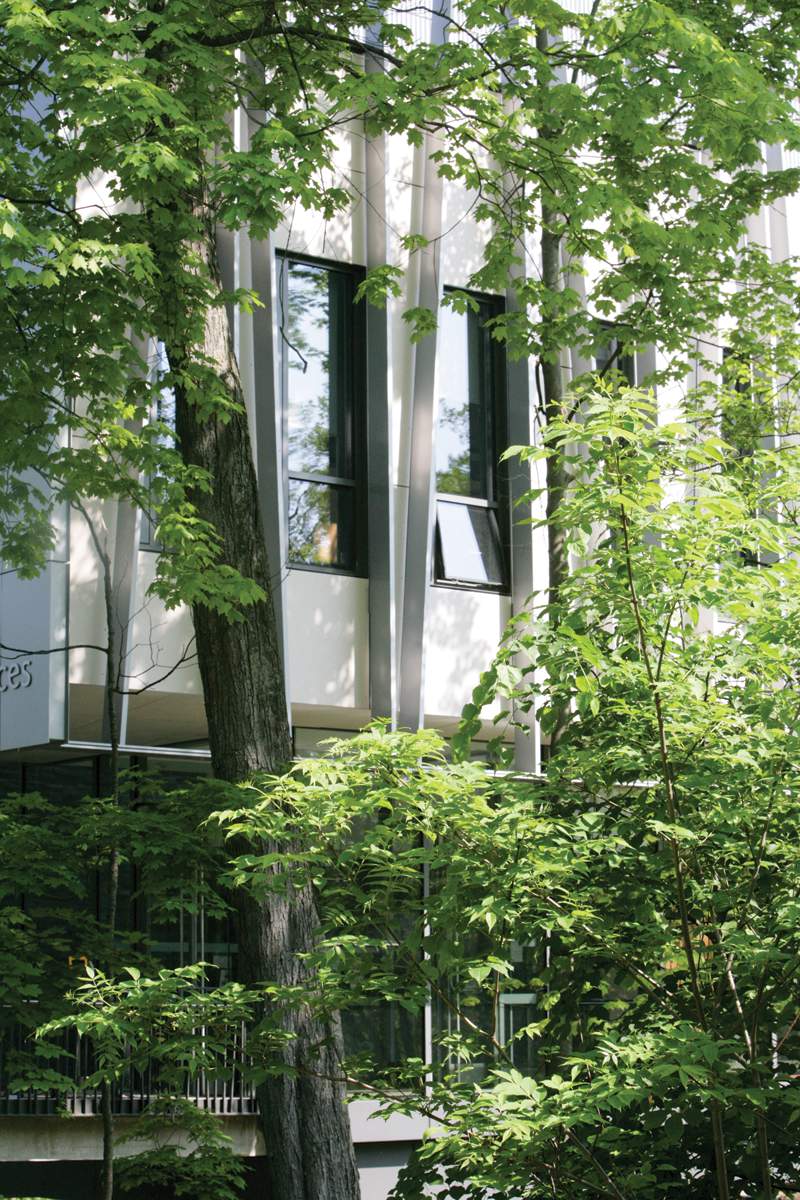
“The idea of an integrated science center grew in me just as it did in my colleagues, as we talked about possibilities and experienced our own joint science ventures,” says Suter today. “I understood that biology was becoming such a broad field of study that it couldn’t be covered by narrowly trained scientists and needed, instead, either collaborative research or very broadly trained scientists. Obviously, collaborations were a good way to go in a small liberal arts college with strengths in bio, psych, physics, sociology, chemistry, and so forth.”
Suter says these backroom conversations, part of a greater conversation about the college’s need for new science facilities, began in the early ’90s, long before the Vassar 150: World Changing campaign made it possible to back up the ideas. The formal conversation about what would later become the “Bridge building,” began in 2003, timing that coincided “with the recognition by alums, folks in admissions, and science faculty that Vassar was lagging behind its close competitors in the quality of its science facilities,” explains Suter.
What grew out of all of the discussions became the school’s mission to integrate the sciences. The connection became a multidisciplinary bridge to learning that included cross- and multidisciplinary opportunities in addition to core disciplinary approaches, collaborations, and collaborative environments; state-of-the-art instrumentation and facilities; and a focus on research and hands-on learning.
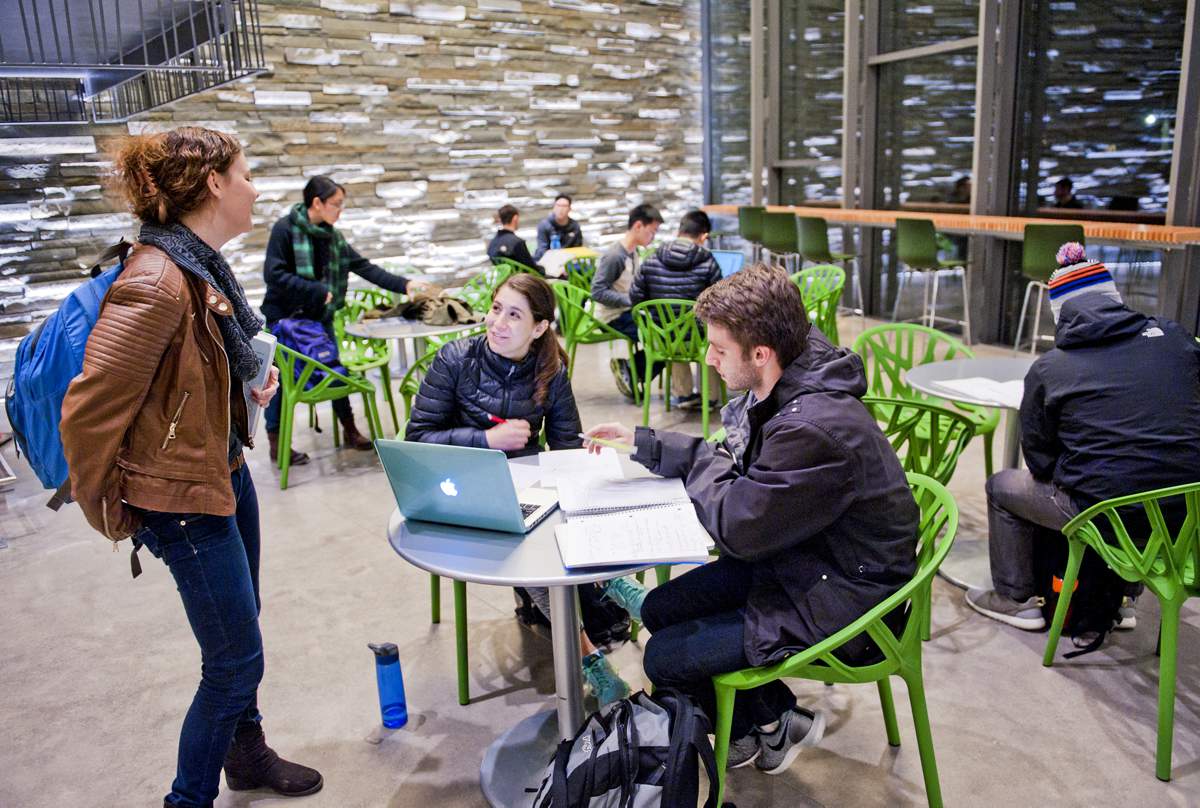
Under the direction of Marianne Begemann ’79, Dean of Strategic Planning and Academic Resources, chemistry professor, and leader of the Vassar-based Bridge team, the poetic mantra for the ISC project became, “science in sight.” A conscious decision was made to conduct classes and research behind glass, not opaque walls, so visitors could observe science, whether they were taking science classes or not.
“I hope that what happens through ‘science in sight’ is that all students will think about the value that studying science and science itself bring to an understanding of the world around us, and realize that science is actually fun,” says Begemann.
State-of-the-art equipment, such as an X-ray source diffractometer that had been housed in a closet, is now visible to the public through glass walls; this is another example of “science in sight,” says Joseph Tanski ’95, Professor of Chemistry. A diffractometer uses X-rays to determine the structure of molecules, he notes. This is important because understanding the structure of molecules enables scientists to “manipulate or change them to obtain desired properties or desired reactivity in chemical reactions. For example, in the pharmaceutical industry, novel drugs are designed based on their shape to bind to specific places on biological molecules causing the desired pharmaceutical effect.”
Now, he says, “anyone who casually walks by can learn what the instrument does, and it may encourage them to learn more or get involved with using the instrumentation.”
“It’s thrilling to be able to walk through the building and see classmates at work in the beautiful lab spaces.”
“It’s thrilling to be able to walk through the building and see classmates at work in the beautiful lab spaces,” says Seamus Taylor ’17, an interdisciplinary Science, Technology, and Society major who hails from Iowa. “I’m much more likely to express an interest in pursuing research in those labs because of the visual appeal of the new X-ray and Amber labs.” Note that Taylor arrived at Vassar in 2013 expecting to be a political science major.
“The building is definitely a catalyst for my interests,” says Katie Hoots ’18, a double major in biology and Greek and Roman studies from Illinois. “The Bridge is one of my favorite study spots with its beautiful views, natural light, and the Bridge Cafe. The open and integrated nature of the building creates a sense of accessibility.”
“The idea that anyone can walk through this building and run into a scientist and run into someone who is not a scientist is really important,” says lead architect Richard Olcott of Ennead Architects, which designed the Bridge. “It makes it a building for everyone.”
“You don’t realize it’s true until you experience it,” says John Long, Professor of Biology and Cognitive Science on the John Guy Vassar Chair. “Space matters. The lighting, the colors, the sounds. The very best part of the Bridge for Laboratory Sciences is being in there. The architecture creates new opportunities for being physically present and socially interactive.”
“When people want to be in a space because they intuitively like it, that makes it easier to teach,” Long adds. “Students are now hanging out, drinking coffee, studying, conferencing before and after class. They are drawn to the Bridge building. So when they go to class, they are primed with a positive attitude. The building is the warm-up act for the professors.”
“There was a moment when I said, ‘Wow, it actually works,’” Begemann recalls. “I happened upon the whiteboards outside faculty offices that form the backdrop to small work clusters. They were covered with chemical and mathematical formulas on one half and notes related to a totally unrelated humanities course on the other.”
She adds, “Seeing into the labs and classrooms may not encourage a student to take a course, but certainly it will reduce the mystery about what happens when one does. And hopefully it will stimulate curiosity in and understanding of the sciences.”
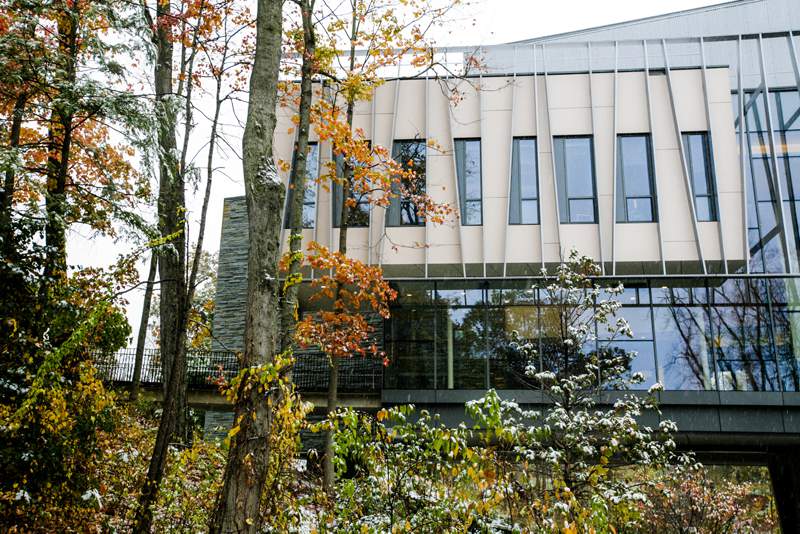
Surely such cross-pollination will bring students to explore topics they never thought they’d pursue before. A perfect example is the path taken by Erik Szwed ’17. I met Erik in physics professor Brian Daly’s updated optics lab housed in Sanders Physics. From Michigan, Erik arrived at Vassar intending to be a drama major until he took the cross-listed class “Limits of the Universe and Limits of Understanding,” taught by physics professor Cindy Schwarz and philosophy professor Jennifer Church. Erik is now a physics major.
With its multidisciplinary laboratories and program suites, the new science quad, comprised of the Bridge, New England,Olmsted, and Sanders Physics, also fosters what architects call “productive collisions.” Kevin Holloway, Professor of Psychology, says: “Collaborations with different departments are now year-round. Before it was prohibitive because we were clear across campus from each other so collaborations couldn’t just happen naturally by bumping into each other in the hallway of a building we shared.”
Miriam Rossi, Professor of Chemistry, who has been teaching at Vassar since my time at the college—she started in 1982—has already begun collaborative research projects with her students, and other science faculty members and their students. A research project with Stuart Belli, Associate Professor of Chemistry and Director of Environmental Studies, and Kate Susman, Professor of Biology on the Jacob P. Giraud Jr. Chair, conducted at Vassar and in Italy through URSI (Undergraduate Research Summer Institute) at the Roma Tre University of Rome, quantifies the biological activity of several extra-virgin olive oils. Another project, which her research group will begin this fall, will analyze the biological activity of chocolate. “The location of the Bridge building has literally brought us closer together, and the newly designed and spacious laboratory space works well for these types of projects,” says Rossi.
“It has made it possible for us to not think about what department we are in, but rather simply to think about our research,” says Long.
Tanski says one important aspect of the Bridge building is that it “breaks down the old divide between classrooms and labs,” allowing students to do as they learn. “With teaching walls and laboratory equipment, such as fume hoods and instrument spaces, classrooms can be used for both lectures and laboratory work, or even integrating these together at the same time,” he says.
Outside of the classrooms, many updated spaces are designed to serve common scientific needs and multidisciplinary collaborations. So, for example, chemists share the new Earth and Environment Lab in the Bridge with their colleagues from biology, environmental studies, and earth science. And, in a first-of-its-kind collaboration at a liberal arts college, the Bridge brings together biology, cognitive science, and computer science in a custom-designed, permanent robotics research laboratory on its lower level.
A hi-tech phytotron with 12 growth chambers in the lower level of the Bridge is the pride of botanist and biology professor Mark Schlessman. The phytotron provides a controlled environment that allows adjustments to temperature, light, and humidity for phytopathology, entomology, and other plant science research, and Vassar has more chambers than any other college and nine more than even the New York Botanical Garden. It’s in high demand across a variety of research projects, he reports.
Next to the Bridge building, Olmsted received an internal face-lift that, despite the thousands of hours I’d spent there, left it nearly unrecognizable to me, with new entrances, expansions to the lobby, fixes that brought in more natural light, and fully updated classrooms. Two previously unusable floors now boast observation and testing suites containing sophisticated research equipment. All three levels of the building are connected to the Bridge building and a two-way, seamless flow exists between the disciplines within.
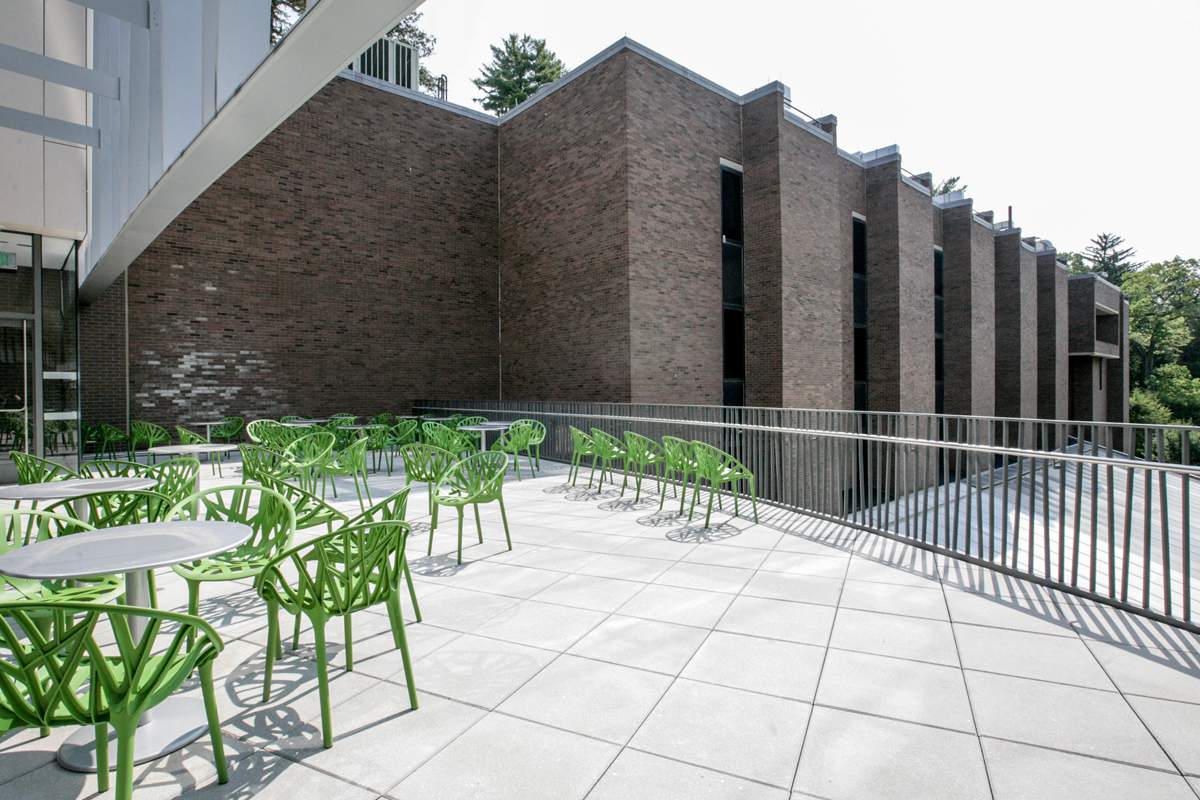
In Sanders, 4,600 square feet of an unused attic was transformed into usable space and the lower level was repurposed into three advanced physics labs. New England now houses both the psychology and cognitive science departments.
All of these improvements are spurring new interest in the sciences. Schlessman says the biggest change that comes from the addition of the Bridge building is that, “For the first time in my 30-plus tenure at the school, I see tours coming through the building in which I teach.”
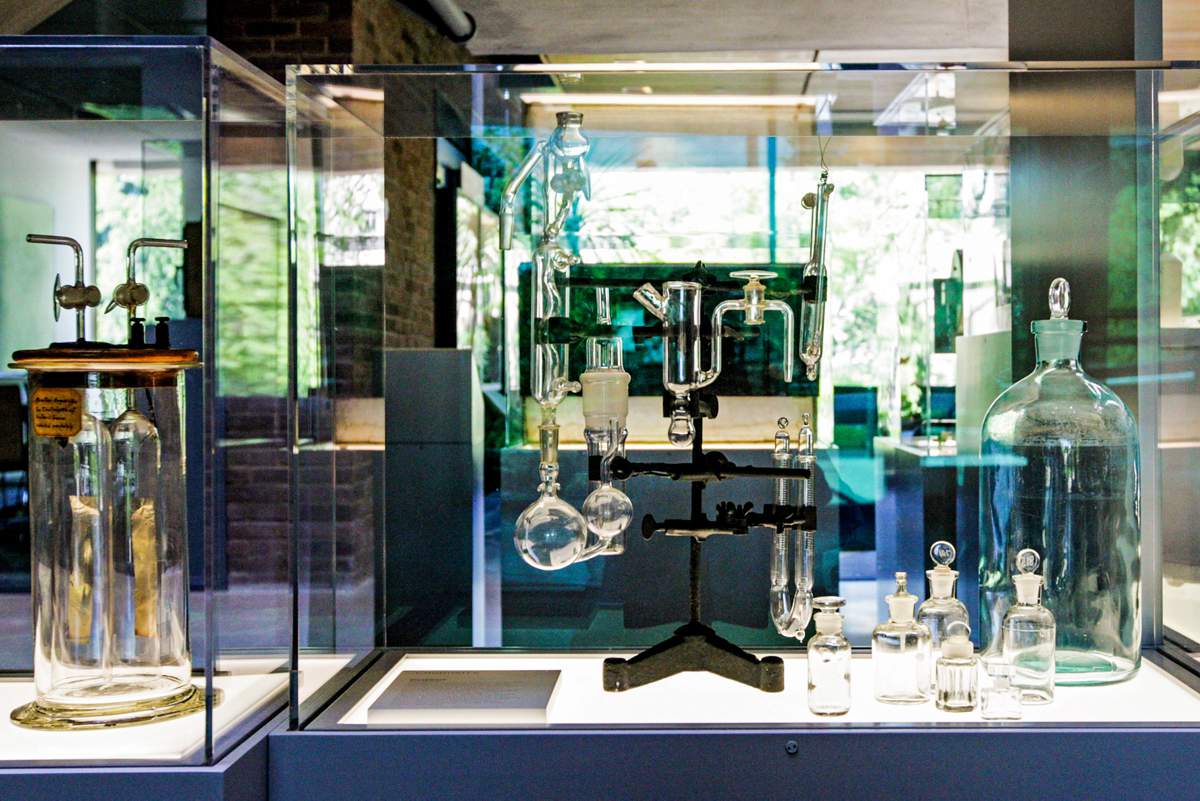
“I definitely think that the Bridge [and the ISC] will change the way prospective students see Vassar,” adds Hoots. “While it’s true that our science programs have been top-notch, the active investment in scientific research and education through this new facility shows students that Vassar isn’t just a school founded in 1861 with good humanities programs; it is equally advanced in the sciences and willing to commit resources to scientific disciplines.”
The ISC has become, as President Hill has remarked, “a linchpin for the college.”
As we finished our tour, Maranda Barry ’16, a cognitive science major from California, asked about our group of dressed-up intruders, touring the buildings with their collective “oohs’” and “aahs” and countless questions. Told that we were a group of journalists who planned to write about the designs, Barry, curled up in a chair in one of New England’s common areas, remarked with a smile, “Please thank the architects.”
